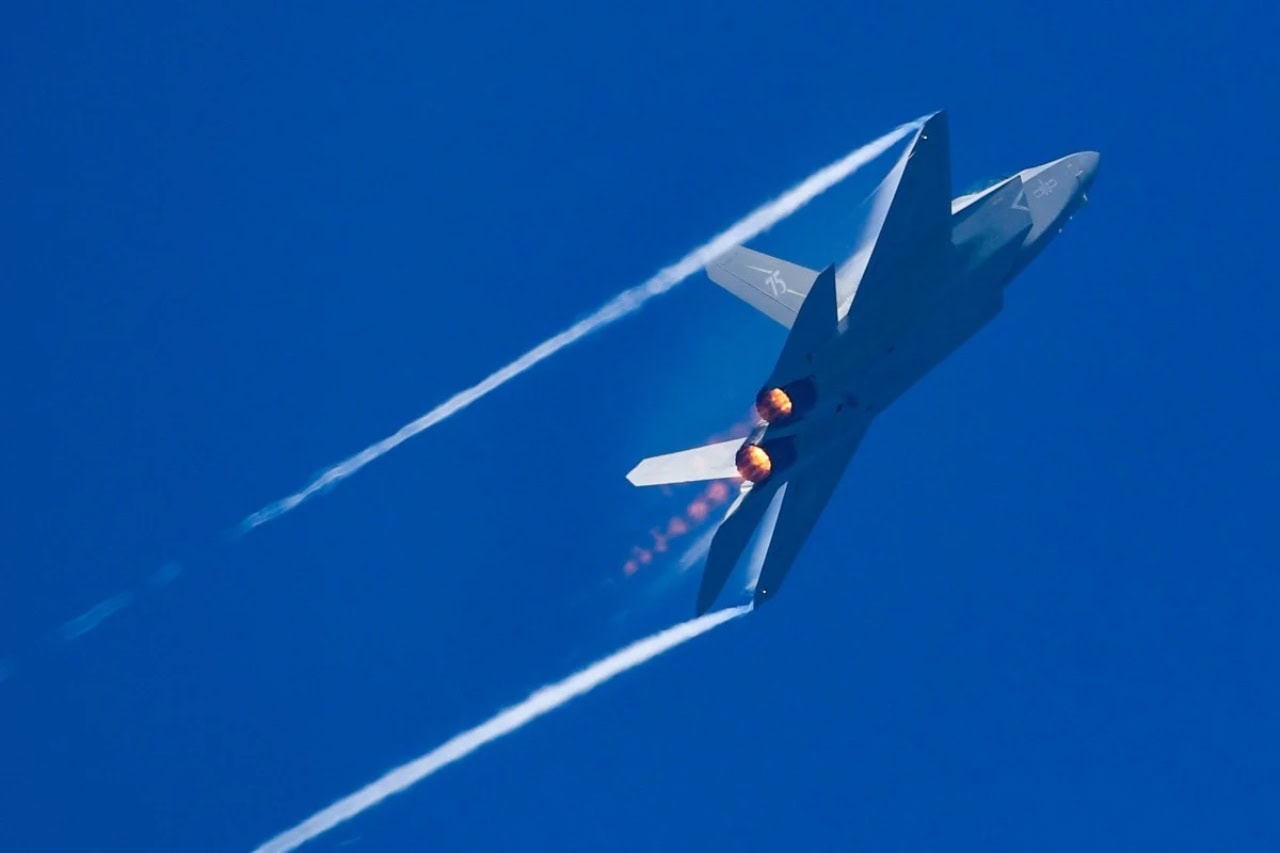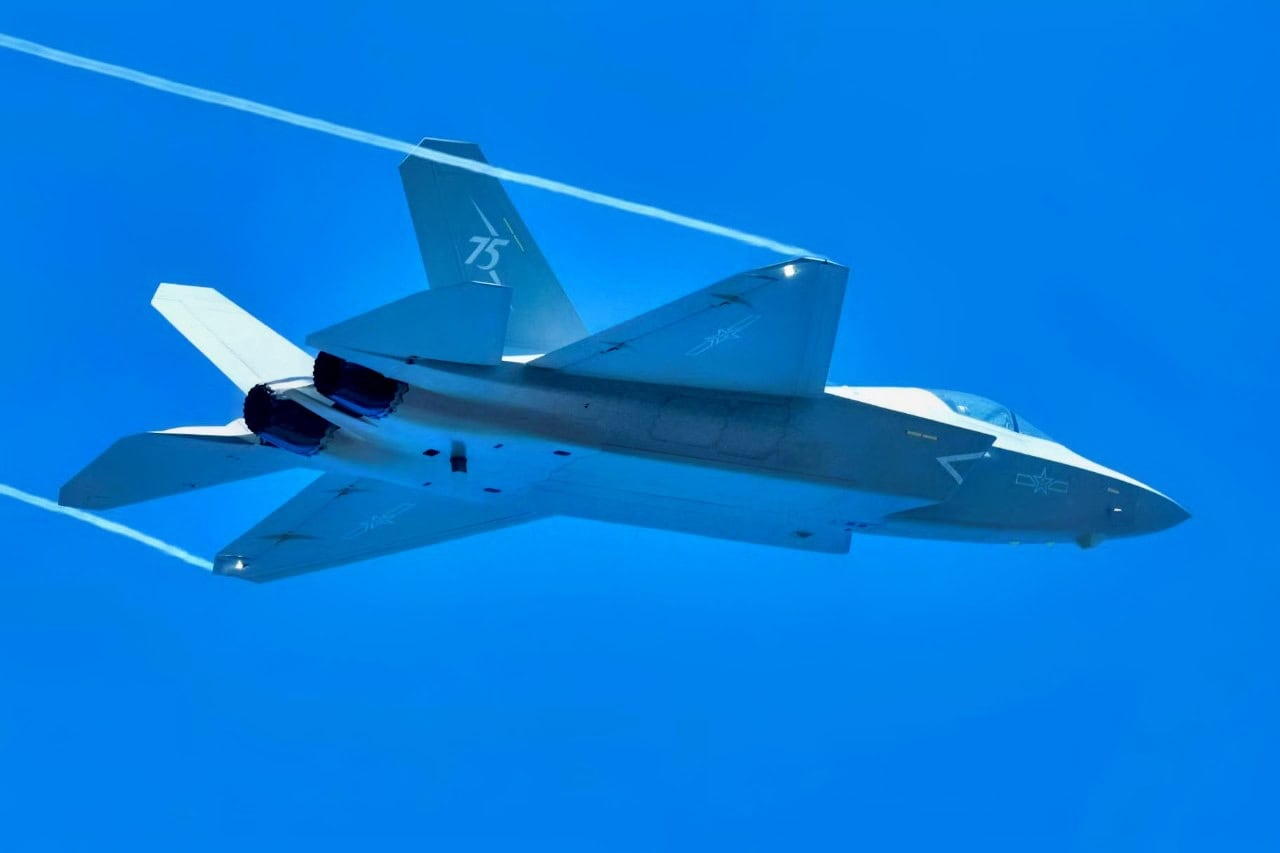Summary and Key Points: China’s new J-35 stealth fighter shares striking similarities with America’s F-35, fueling speculation of espionage-inspired design. Despite uncertainties about its precise operational role, analysts speculate the J-35 could serve as a smaller, multi-role complement to the larger J-20 air-superiority jet.
-While exact engine details remain unclear, the fighter likely features domestically improved or reverse-engineered Russian designs.
-Though impressive, China’s fighter lacks the extensive global logistics, training networks, and standardized production that benefit America’s F-35 program. While the J-35 poses threats to older fourth-generation U.S. aircraft, the scale, interoperability, and experience behind the F-35 remain key advantages in potential large-scale conflicts.
THOSE 2 Words: F-35 Copy?
China’s J-35: A Real Rival to America’s F-35 Stealth Fighter?
China’s J-35 is a stealthy fifth-generation fighter with an internal weapons bay, serpentine air intakes that feed the jet’s two engines, a canted V-tail design, and the plane almost certainly has a radar absorbent coating.
One of the constant online commentaries about the J-35 has been its comparison to the American F-35 Joint Strike Fighter, the American fifth-generation aircraft. Both aircraft share some broad outward similarities, and known or suspected incidents of cyber espionage have previously indicated that the J-35 design may have benefitted from the F-35 program. However, it is also possible that given both aircraft’s roles as stealthy, fifth-generation aircraft, their designs are similar due to their similar operational roles.
People’s Liberation Army Air Force Mystery
However, the specific role that the J-35 would play within the PLAAF is not quite clear.
One possibility would be to fly alongside the J-20 stealth fighter as a smaller, more lightweight counterpart. While the larger J-20 is explicitly an air superiority fighter, the J-35 might be more of a multi-role fighter, capable of a wider variety of missions.
One notable difference between the two aircraft is the J-35’s engines. Unlike the F-35, which is a single-engine fighter, the J-35 sports two. Engine design is an area of China’s aerospace industry that has historically lagged behind both the West and Russia.
Previous Chinese aircraft have flown with RD-33 engines, a Russian design, though thanks to reverse engineering and improvements in engine design and manufacture domestically, China is likely catching up. It isn’t easy to know for sure what engines are currently powering the J-35, but there is potential for higher quality and higher thrust compared to previous Chinese aircraft.

J-35. Image Credit: Chinese State Media.
The Implications
While minute analysis of the exact aspects of both aircraft is not possible, given the non-public nature of the programs, what can be assessed with some certainty is the implication of a fifth-generation aircraft for the United States.
The J-35 would likely present a significant challenge, particularly to the United States’ fourth-generation aircraft, such as the F-15, F-16, and the Navy’s F/A-18. As those aircraft lack the stealth features of their more advanced fifth-generation aircraft, their survivability against stealthy platforms is questionable.
Industry on a Global Scale: J-35 Can’t Match
One advantage the F-35 retains over the J-20 is its maturity of design. The F-35 program is a very mature program that has yielded over a thousand jets and is now in mass production, in service with allies of the United States across the world. Additionally, the F-35 has a global supply chain, with fighters built in both the United States and Europe.
Common production lines aid logistics much like NATO standardization: F-35 pilots from one country can fly F-35s from another country, and ammunition for the jet can be produced in the United States for use with, say, Italian F-35s.
In a head-to-head fight between a single J-35 and F-35, which jet would win? Hard to say. Much depends on the aircraft’s respective stealthiness, as well as the distance they would be able to detect each other and the distance from which they would be able to fire at each other.
But what if that scenario was expanded to include dozens or hundreds of fighters? In that case, the F-35 could be more likely to have an edge thanks to excellent pilot training, robust information networks, and practiced sustainment.
About the Author: Caleb Larson
Caleb Larson is an American multiformat journalist based in Berlin, Germany. His work covers the intersection of conflict and society, focusing on American foreign policy and European security. He has reported from Germany, Russia, and the United States. Most recently, he covered the war in Ukraine, reporting extensively on the war’s shifting battle lines from Donbas and writing on the war’s civilian and humanitarian toll. Previously, he worked as a Defense Reporter for POLITICO Europe. You can follow his latest work on X.

